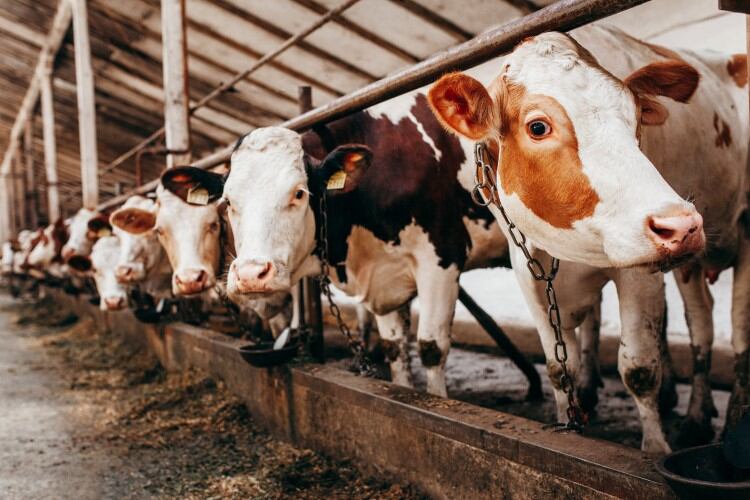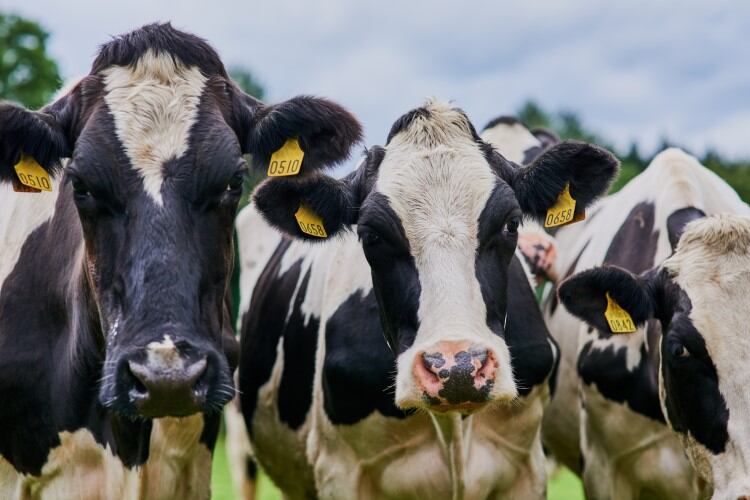However, the impacts of lower protein diets on dairy cow performance must also be considered, according to the findings of a study involving two of Northern Ireland’s biggest animal nutrition companies, John Thompsons and Sons Ltd and Trouw Nutrition Ltd.
Those companies are partnering with the Agri-Food and BioSciences Institute (AFBI) in a four-year project designed to reduce nitrogen losses from dairy systems. The initiative is funded by Northern Ireland’s Department of Agriculture Environment and Rural Affairs (DAERA).
The AFBI provides scientific research and services to government, NGOs, and commercial organizations.
Nitrogen loss
Dairy cow diets contain nitrogen, mostly in the form of protein. However, nitrogen use efficiency by dairy cows is low, with only approximately 30% of nitrogen that is consumed being converted into milk protein. Much of the remaining nitrogen is excreted in manure, reports the AFBI.
Nitrogen is lost from manure, during housing, manure storage and field spreading, in the form of ammonia gas, and when deposited on sensitive habitats this can lead to biodiversity loss and soil acidification.
The study
In one of the studies within this project, dairy cows were offered diets containing either 14%, 15.5% or 17% crude protein (CP) on a dry matter basis, with the concentrates offered with each treatment formulated using different raw material inclusion levels.
During the trial, samples of faeces and urine produced from cows on each diet were collected and subsequently mixed and incubated in a temperature-controlled environment. Ammonia produced from the different manures was then measured over a four-week period using a photoacoustic gas monitor.
Findings
Reducing diet CP levels from 17% to 14% reduced ammonia emissions by an average of 64%, with emissions from the 15.5% CP diet intermediate, noted the researchers.
In addition, the results clearly demonstrate that ammonia production was highest during the days after the faeces and urine were produced, and gradually decrease over time, they reported.
While these results demonstrate that reducing diet crude protein levels can play a role in helping to reduce ammonia emissions from dairy systems, the impacts of lower protein diets on dairy cow performance must also be considered and are currently being examined within this study, confirmed the partners.
Ammonia sources
Northern Ireland, according to data published by DAERA, is responsible for 12% of UK ammonia emissions, despite only having 3% of UK population and 6% of the land area.
This relatively high contribution reflects the importance of the agriculture sector to the NI economy and the nature of Northern Ireland as a food-exporting region in which agriculture is dominated by livestock, with very little arable farming.
Some 97% of NI ammonia emissions come from agriculture, reports DAERA.
"Cattle are responsible for around 62% of ammonia emissions from agriculture while the corresponding figure for the poultry sector is 14%. Pigs produce 8.7% of NI agri emissions with 8.3% coming from fertiliser. Sheep are responsible for 0.8% of ammonia emissions from agriculture with the spreading of digestate to land accounting for 4.1%."
There are a number of measures which farmers can take to reduce the amount of ammonia their farming system emits, outlines DAERA. These mitigations include;
- Extending the grazing season for livestock
- Applying stabilised urea fertilisers
- Spreading slurries and manures using low emission techniques
- Improving the cleanliness of farmyards
- Reducing crude protein in livestock diets
- Incorporating feed efficiency within decisions on genetics and breeding
- Well designed tree plantations downwind of livestock housing
- Covering above ground slurry stores
- Installing low emission flooring systems in livestock housing





